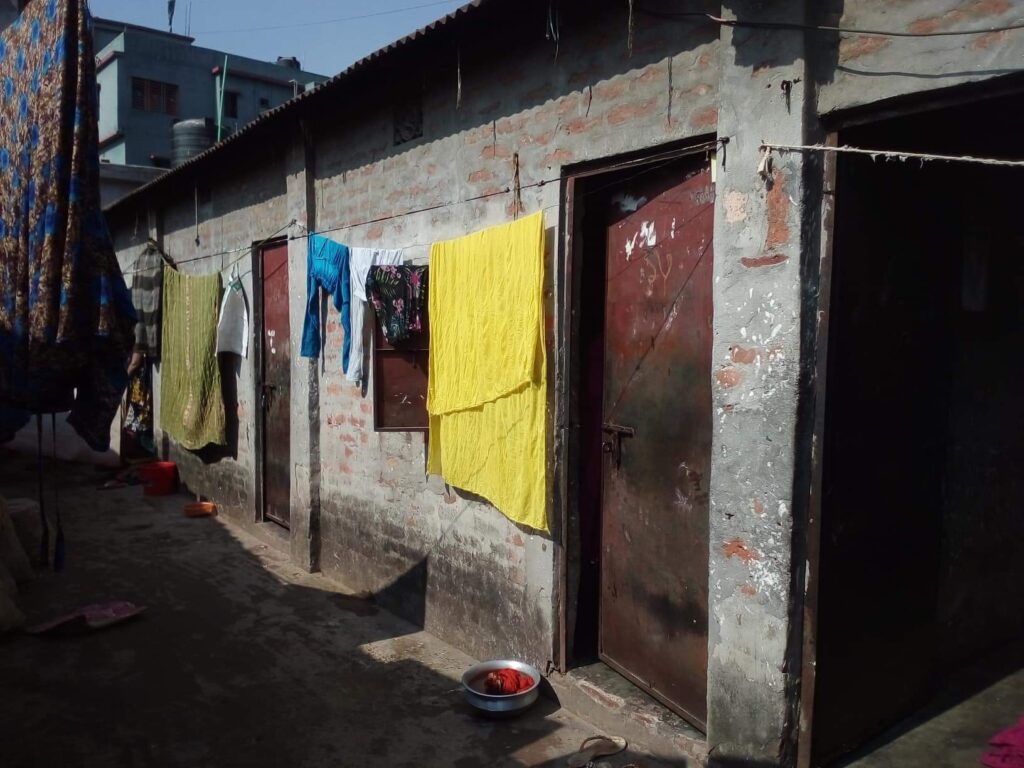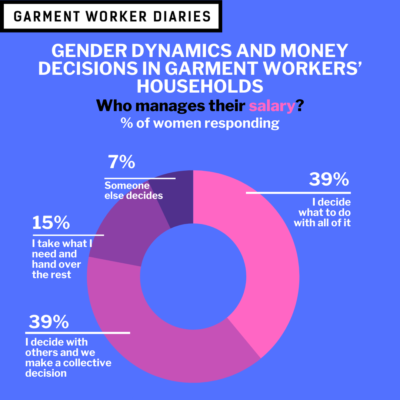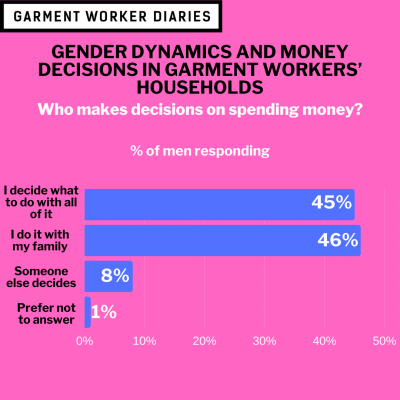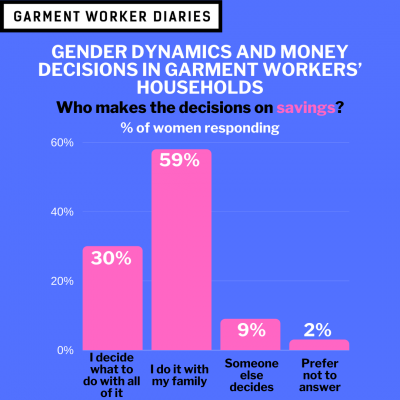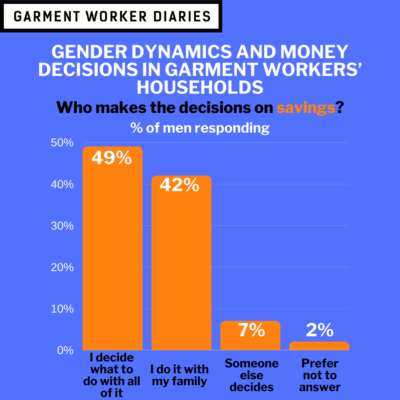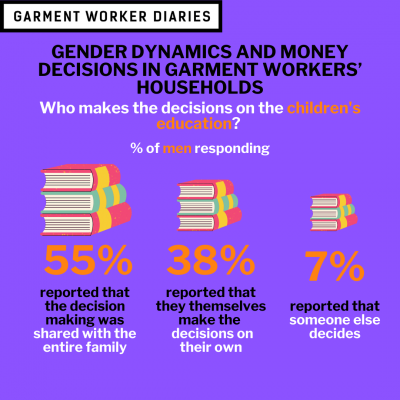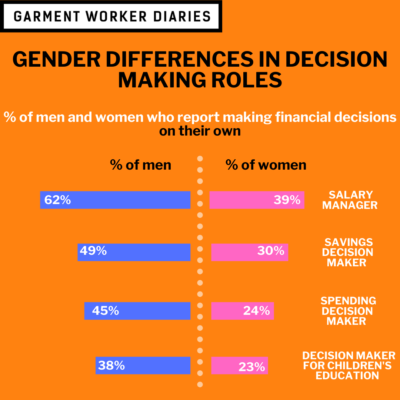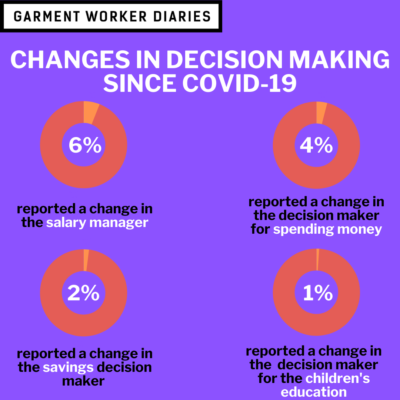MFO and SANEM have now completed 14 consecutive weeks of interviews with garment workers in Bangladesh about how they are working and living through the COVID-19 pandemic. We have been following their lives in order to determine if there have been any changes in the way garment workers eat, work, bank, tend to their health, and gather information.
We’ve also been tracking how garment workers make financial decisions. We wanted to know how much control a worker has over the money she earned, how spending and saving decisions are made, and how these varied by gender. We also asked whether any changes in decision-making had occurred since the onset of COVID-19. We used a similar approach to the one taken by BSR’s HERfinance Bangladesh impact survey. The data shows a consistent pattern in terms of differences between men and women garment workers: women were more likely than men to say that they take decisions in conjunction with a family or other household member; while men were more likely than women to say that they make financial decisions on their own.
Salary Managers
- When asked who is in charge of managing their salary, 44% of garment workers reported that they make decisions on their own
- 39% of women compared to 62% of men reported making salary decisions on their own
- 36% of garment workers reported that they themselves in addition to others make a decision together as to what to do with their salary earnings
- 39% of women reported sharing decision-making responsibilities, compared to 23% for men
- 14% of garment workers take what they need and hand over the rest
- 15% of the women and 11% of the men interviewed reported doing this
- 6% of garment workers reported handing their salary over for someone else to decide what to do with their salary earnings
- 7% of women reported handing over their salary compared to 4% of men
Additionally, only 6% of garment workers reported that the decision maker had changed since the beginning of April. Despite the small number of data, when a change was reported the data suggest it was because of a change in who in the household was (or wasn’t) working at the time.
Spending Money
- When asked who makes the decisions on spending money, 29% of garment workers reported that they make spending decisions on their own
- 24% of women compared to 45% of men reported that they are solely in charge of making spending decisions
- 61% of garment workers reported that they themselves in addition to their family members help decide how to spend money
- 65% of women compared to 46% of men said that spending decisions are taken up by the whole family
- The remaining 10% reported it was someone else who decides how to spend their money
- 10% of the women and 8% of the men interviewed reported this
Only 4% of garment workers reported that the decision maker for spending money had changed since April.
Saving Money
- When asked who makes the decisions on savings, 35% of garment workers reported that they make savings decisions on their own
- Women were less likely to report that they make savings decisions on their own, at 30% compared to 49% for men
- 55% of garment workers reported that savings decisions are made with the entire family, themselves included
- 59% of women reported making savings decisions with the whole family, compared to 42% for men
- 8% of garment workers reported someone else as the person making decisions on savings and 2% opted to not answer the question.
Following the same pattern, very few garment workers, just 2%, reported that there had been any change to the savings decision maker since April 2020.
Education Decisions
- When asked who makes the decisions on their children’s education, 26% of garment workers reported that they make education decisions on their own
- 23% of women reported making children’s education decisions on their own, compared to 38% for men
- 67% of garment workers said that decision making for children’s education was shared with the entire family
- 70% of those sharing education decision making responsibilities with the family were women, compared to 55% for men
- 7% of respondents chose ‘someone else’ as the person in charge of their children’s education decisions.
Again, only 1% of respondents reported any change to decision-making responsibilities concerning children’s education since April.
All data presented here come from interviews conducted over the phone with a pool of 1,367 workers. These workers are employed in factories spread across the five main industrial areas of Bangladesh (Chittagong, Dhaka City, Gazipur, Narayanganj, and Savar). Just over three-quarters of the working respondents are women, roughly representative of workers in the sector as a whole.
